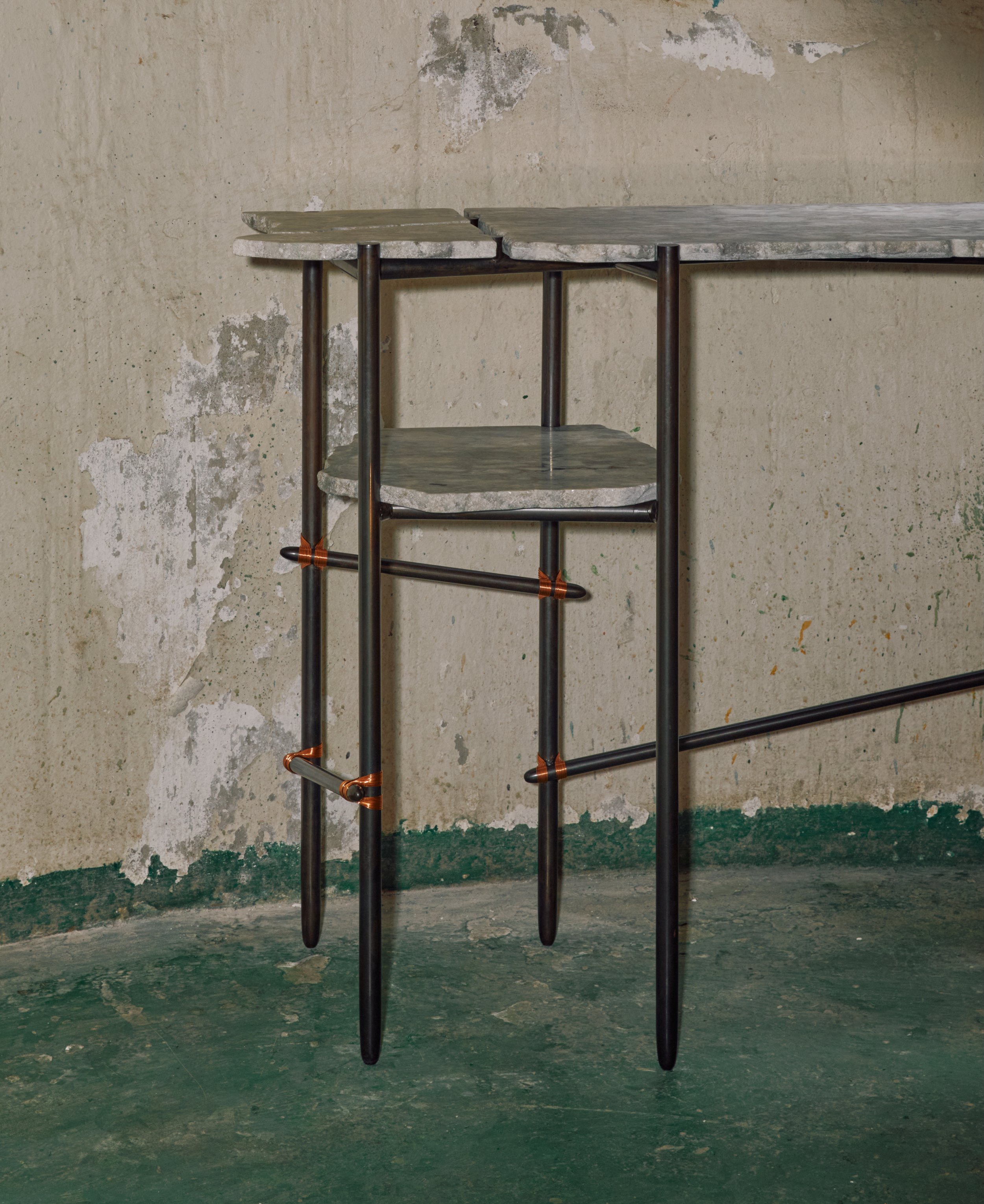MEET OUR PEOPLE — with Marlo Lyda
Meet our People — Marlo Lyda
INTERVIEWER: CLAIRE DELMAR
In this edition of "Meet Our People," we sit down with the incredibly talented Marlo Lyda, a Sydney-based designer-maker and curator. Transforming often-overlooked materials into delicate yet functional objects, Lyda’s work challenges conventional perceptions of waste by revealing the hidden value within discarded resources. Her diverse portfolio, spanning furniture, lighting, and material research, has been showcased at Dutch Design Week and across Australia. Her dedication to highlighting the beauty of both craftsmanship and materials extends beyond her own creations, influencing the exhibitions she curates. An inspiring fusion of creativity, sustainability, and community-driven leadership.
How did you get involved in the design industry, and what have been the biggest influences on your design style?
I’ve always been drawn to two core passions: design and nature, both deeply influenced by my upbringing. I spent my childhood split between the urban pulse of Sydney—where my mother ran a furniture and lifestyle showroom—and the untamed bush of our family property, Mountain View, near Oberon. On one hand, I was surrounded by exquisitely crafted objects from around the globe; on the other, I experienced the self-sufficiency and creativity of bush life. This duality instilled a deep reverence for nature’s cyclical, evolving order and the beauty within natural materials. Although design was ever-present in my life, discovering the graduation show at Design Academy Eindhoven in 2017—and later studying there—revealed design’s boundless potential as a way of thinking, storytelling, and reshaping the world. Immersion in the Dutch design ethos, along with tutelage from Formafantasma, Ilse Crawford, and Atelier NL has refined my style into a worldview fueled by curiosity and material exploration.
How would you describe your design philosophy and approach? In what ways do you apply these in your work?
My design philosophy is rooted in reducing each creation to its essential elements. I believe true value emerges when discarded materials are transformed into objects of beauty. I’m captivated by the journey from “waste” to “resource”—whether it’s stone remnants, invasive weed species, or metals recovered from e-waste. Each material carries its own story of neglect and hidden potential. By honouring their inherent qualities, I let the materials guide my work, resulting in designs that feel both natural and inevitable.
Where do you find inspiration for your designs?
I find inspiration in the world around me. My approach is both biophilic and social—I immerse myself in natural environments, working directly with materials and engaging with the people who interact with them. I trace shadows, study rock fragments, capture the seasonal growth rings of trees, and photograph water droplets. For projects needing a grounded perspective, I fully engage with their context. While developing my Turning Camphor Collection, I drove through the Northern Rivers, speaking with ecologists, activists, mill workers, and local craftspeople, and walking through old-growth forests. In other projects, I’ve explored mines, stone yards, scrap yards, and recycling facilities. By hearing it straight from the source and being fully present, the forms and unexpected details naturally emerge.
What new design trends should we be watching? Are you a fan of trends or timeliness designs?
I closely monitor developments in materials and sustainability. I see sustainability as an assumed foundation—especially in resource reuse—where “waste” is redefined as an “existing resource.” This shift paves the way for intelligent systems for material recovery, sourcing, and reapplication. As an independent designer, I relish the freedom to shape my own systems, transforming discarded materials into objects of deep character and relevance. I believe it’s the emotive narrative of material transformation that elevates sustainability beyond a checklist, fostering a mindset in which every resource is cherished. With recovered materials, you can literally achieve anything; while acknowledging the labor involved, the environmental and material savings often outweigh the costs tenfold.
How do you approach collaborations and commissions with clients?
I'm still cultivating my experiences with commissions, and I deeply value the trust clients place in me when expanding my collections into new design territories. I naturally gravitate toward shared creative experiences, where collaboration becomes a genuinely communal and joyful process. Leading projects like the MATTERS exhibition has taught me that building a community of creators—and fostering intergenerational knowledge exchange—is truly priceless. Trust is key in my practice, and I've grown to appreciate supportive partners, such as Useful Object Gallery in Melbourne, where I had my first solo show, and the nurturing guidance of the Powerhouse Museum. Their support has been invaluable in developing and sharing my work.
What’s on the horizon for you and your business?
The past three years since graduating from Design Academy have been transformative (and a little exhausting)—marked by major collection launches, the evolution of MATTERS, and a Powerhouse Museum fellowship, all while working odd jobs for financial stability. As I step into 2025, I sense a new phase focused on balance and intentional growth as I approach 30. I plan to prioritize making and sustaining my existing collections, further developing a material research project from 2022 into a fully realized collection for a major commission, and exploring opportunities to work and exhibit overseas.
What aspect of your business do you love the most?
ransforming overlooked waste into objects of beauty isn’t just about design—it’s about unveiling the history and latent potential within every element. Each piece (of stone, copper, wood, etc) carries its own narrative of transformation, and translating that into a tangible, evocative object is the most rewarding part of my work. I truly can’t imagine doing anything else for a lifetime.
As an industry leader, what advice would you offer anyone aspiring to establish a career in a design-related field?
I often try to remind myself of my authenticity; your authentic worldview is your greatest asset, and it’s what will ultimately set your work apart, if you have the bravery to live it.









